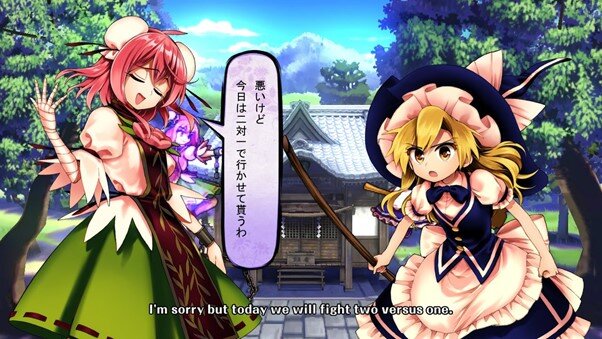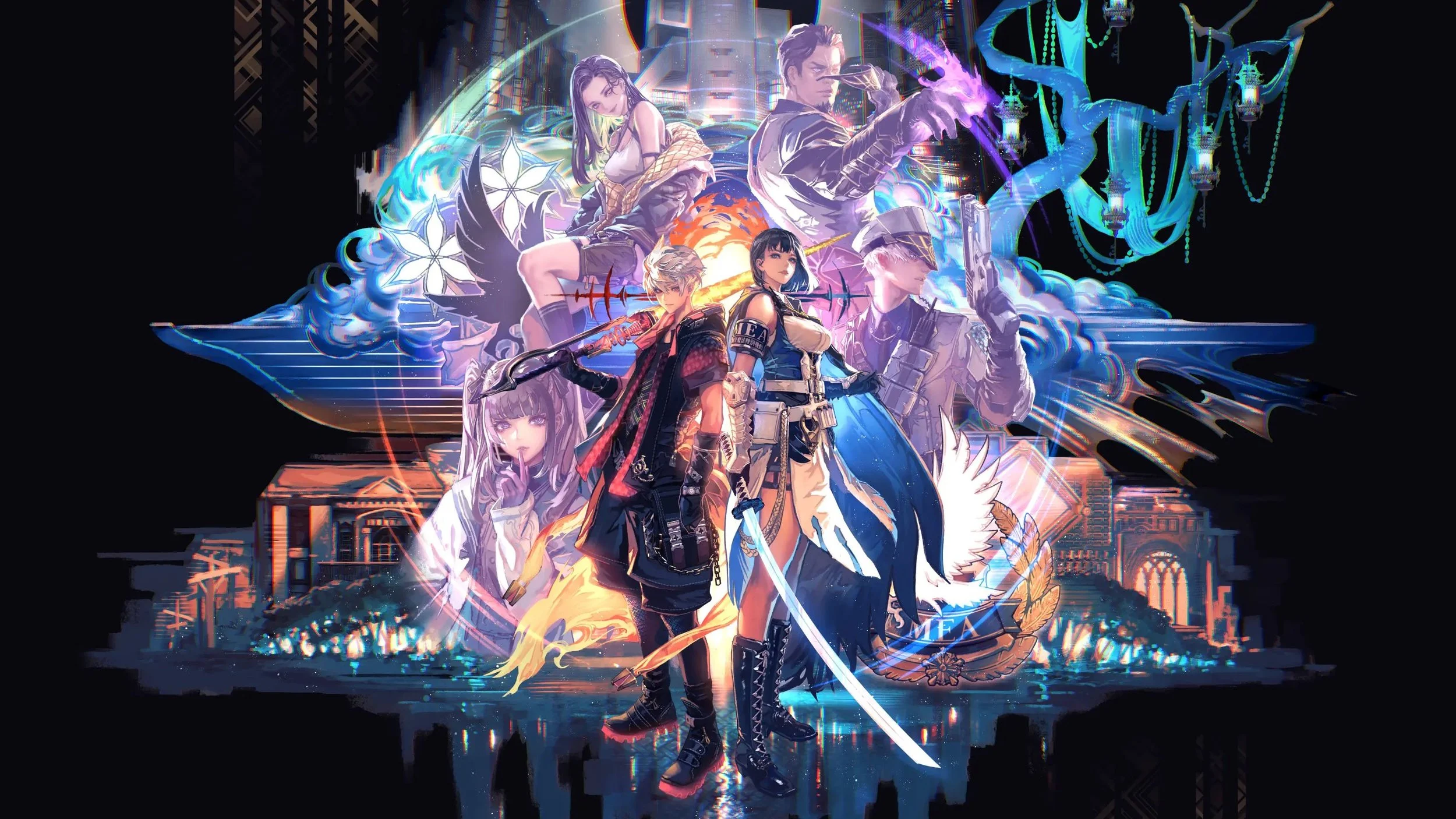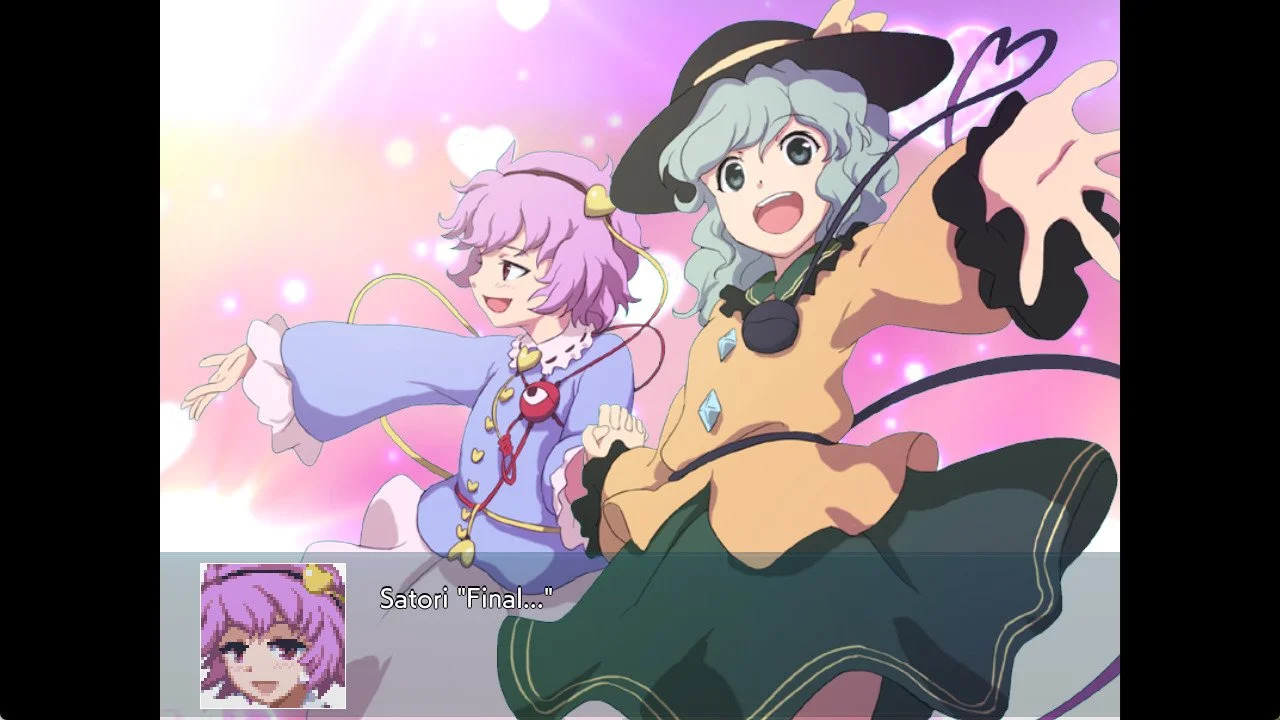Review | Touhou Hyouibana: Antinomy Of Common Flowers
The Touhou Project, usually just called Touhou, built its fanbase on bullet hell shoot ‘em up games. Since 1995 these games have mostly been developed and self-published by the one person doujin developer, Team Shanghai Alice. However, the series sometimes breaks from bullet hells to publish other kinds of games -- like fighting games.
Touhou Hyouibana: Antinomy Of Common Flowers pits magical maidens against each other in tag team battles. It comes from another doujin team, Twilight Frontier, with oversight from series creator, Jun'ya "ZUN" Ōta. However, this isn’t your usual anime fighter, a genre already known for its chaotic and busy screen-filling action. It’s a bullet hell fighting game, which involves dodging countless projectiles and defeating an opponent at the same time. AoCF doesn’t quite fit into either genre. If you’re willing to accept that, then this game can be an entertaining investment.
I think this game might be a little bit anime…
Story
The Touhou series takes place in Gensokyo, a fictional land based off of feudal Japan. It’s in a separate pocket of reality where humans and yokai live together. Yokai, or legendary Japanese creatures like Kappa, take on anthropomorphic forms -- typically cute anime girls. Reimu Hakurei, the series protagonist and miko of the Hakurei Shrine, takes on the responsibility of solving various incidents around Gensokyo.
In AoCF’s story mode, Reimu and the other characters investigate Perfect Possession. This mysterious phenomenon lets people possess each other with a Master and Slave dynamic between the two. One person is the Master — the one who can switch between consciousnesses at will. The Slave is the possessed one who bends to the Master’s whims.
Reimu sets out to investigate the incident by forming a duo with hermit Kasen Ibaraki and testing Perfect Possession against other series favourites like Marisa Kirisame. After completing Reimu and Kasen’s chapter, players can move onto other character chapters to learn more about Perfect Possession and finish the story.
The story mode doesn’t last too long, and it lets the player try each of the characters to get a feel for which ones they like. Each chapter stars a pair of characters and their roles in the Perfect Possession incident, whether that means conducting their own investigations or challenging others to fights. Eventually, after the player completes all the chapters, a final chapter is unlocked that leads to the scenario that solves the incident.
Most of the dialogue presents as Japanese text in speech bubbles with English translations on the bottom of the screen. It’s a little bit unintuitive -- because the player’s eyes naturally lock onto the text bubbles first -- but not an end-all
There’s not much depth to the story. No life lessons, character development, or long-lasting consequences for the villains. However, at the baseline, the story makes sense and pieces itself together from multiple perspectives in an easy-to-follow fashion.
Gameplay
AoCF keeps the bullet hell lineage of the franchise alive with a myriad of projectile attacks. The story mode bosses boast hefty defences and projectile spam, although players can adjust the difficulty to their liking. Difficulty ranges from Easy to Overdrive (the hardest level after the player finishes the story) to make boss fights more manageable. Players beat bosses in best-of-three matches to pass each stage, which is pretty standard for fighting game competitive formats. After their first defeat, bosses gain a shield that needs to be broken before taking any more damage. Shields add another step to story mode battles but don’t significantly amp the difficulty. The semi-permanent shields and boss mode bullets aren't actually mechanics that players can use against each other in versus modes. However, versus modes apply the same best-of-three rules.
This menu has more elements on scene that most non-anime fighting games have in the whole game.
The tag teams work with the aforementioned Master-Slave dynamic, where players can switch between both characters to take advantage of their different skills. The Master character determines the selection of spells players can pick from at the beginning of the match.
During character select, players pick from three spells with different meter costs. Some are powerful projectiles, damage-dealing shields -- the list goes on. To add to the confusion, it isn’t exactly clear to non-Japanese speakers what the spells are because the names are in Japanese with no clear translations. The names don’t change even if you toggle between languages. Practice mode is the best way to learn what all the spells for a particular character actually do. But it is frustrating that you have to test each one for yourself to even know what they do.
AoCF features a diverse cast of characters that are balanced well against each other. Most characters seem to have a reasonable counter, so none of them feel particularly overpowered. Each character has a unique moveset, so nobody feels too similar to someone else (looking at you, Smash Ultimate swordfighters). The number of tag team and spell combinations also help to diversify competition.
Mechanics
People who enjoy traditional fighting games and anime fighters will notice similar mechanics in AoCF, but there are some differences. First off, characters float instead of standing on solid ground. You can move up and down, but there isn’t any jumping. Gravity always draws you back to the centre of the screen. So, even after dodging an incoming fireball, you have to account for gravity possibly dragging you back into the line of fire. It’s a reasonable tradeoff for being able to move in multiple directions on the y-axis, albeit one that takes a bit to get used to in terms of timing.
Time to spend 10 episodes charging up!
AoCF has three meters to manage during a fight:
The ‘stamina meter,’ which looks like a row of circles, indicates when the player can use their specials (or non-melee) attacks. These circles refill over time.
The ‘spell meter’ which allows you to cast powerful spells that act like supers or ults and fills up as you successfully land hits.
The ‘possession meter’ which appears next to the Slave character’s icon in the upper corner of the screen. This meter indicates if the player can switch to their Slave and how much damage the Slave can take before they’re forcibly switched back with the Master.
Some tag team fighters like BlazBlue: Cross Tag Battle give each character their own health bar, but AoCF tag teams share one. Also, if you take damage as the Slave, you lose health AND energy from the possession meter. Once the possession meter runs out, the player temporarily loses access to their Slave character until they charge up the meter again by landing more hits.
Players can indefinitely shield themselves to block attacks, but they still receive chip damage. You can hold the block button as you move for AoCF’s equivalent of an air dodge, and hold back to block and parry incoming moves. The parry, essentially a “quick block,” lets players recover sooner than the full shield. You can also cancel out certain projectile attacks with your own.
Most modern fighting games have a built-in tutorial to teach beginners the controls. However, AoCF throws the player into the fray to learn the controls as they go. There aren’t any movelists to help beginners learn exactly what inputs equate to certain attacks, either. It isn’t too complicated to understand what buttons do after a few games of mashing or some time in Practice mode, but it’s an inconvenience that most fighting games don’t have.
The most consistent way to find a match is probably to bring a friend over to your house.
Online
AoCF has a few modes outside of the story, including; Player vs. Com, Player vs. Player, and Room. In Player vs. Com, players fight against a computer on levels ranging from Easy to Overdrive. If you want to play against a real person, you can hand over a controller for Player vs. Player or try to match online in Room. However, beware of the netcode. Many players report disconnecting in the middle of a match and experiencing lag.
We tested the Switch version of the game in an NA location. There was hardly anyone to match with -- maybe one person available a couple of times throughout the day. Fans reportedly use Touhou Discord servers to help find sparring partners.
Overall
After extensive research, I feel pretty confident in saying this is probably anime as all hell.
Touhou Hyouibana: Antinomy Of Common Flowers is a niche game and knows its demographic. I’d mostly recommend it to fighting game fans within the Touhou community. The plot progression is fairly fluid, but it doesn’t explain who any of the characters are or any of the lore. Players get a feel for the characters based on their epithets (“A high fire power, star-loving maiden” for Marisa, for example) and the few interactions they witness in the story. However, the game seems to assume that anyone picking up AoCF is already acutely aware of these characters and their history.
AoCF offers a unique fighting game experience with a diverse, balanced cast. Despite that uniqueness, it didn’t hold my interest after the initial thrill of experimenting with a new genre mash-up. It’s easy to pick up but hard to master. The lack of exposition and explanation for the game’s mechanics or narrative make it difficult to invest in and worth learning over other games. There are other Touhou games that offer more narrative, and more intuitive fighting games with bigger communities. The thoughtfully developed combat system and eye-catching animations make AoCF a title worth looking into for Touhou fans, though it might have a hard time winning over newcomers.











